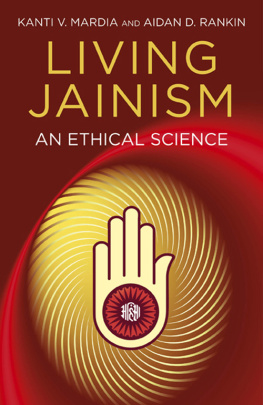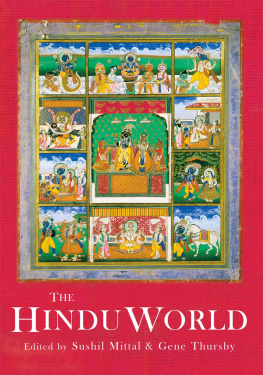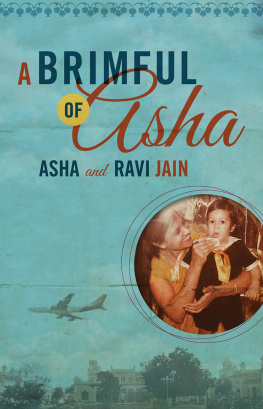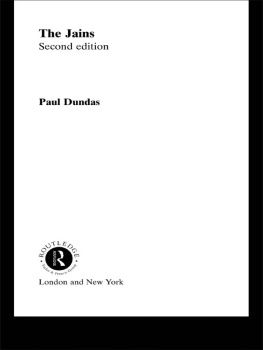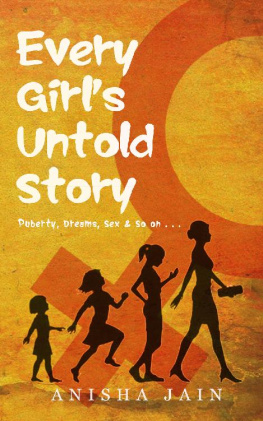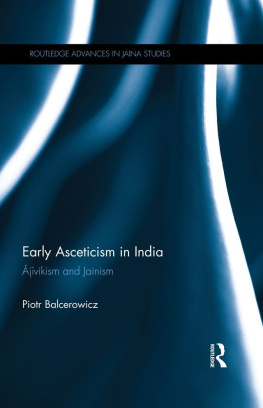About the Author
Kristi L. Wiley (B.S., Santa Clara University; M.A. and Ph.D. University of California at Berkeley) is a visiting lecturer at the University of California at Berkeley. She teaches courses on Indian religions and religion and ecology. Her area of specialization in Jainism is karma theory. She has published articles in Approaches to Jaina Studies (ed. N. K. Wagle and Olle Qvarnstrm), Doctrines and Dialogues (ed. Peter Flgel), Essays in Jaina Philosophy and Religion (ed. Piotr Balcerowicz), Jainism and Early Buddhism (ed. Olle Qvarnstrm), Jainism and Ecology (ed. Christopher Key Chapple), and Philosophy East and West. She is a member of the American Academy of Religion and the American Oriental Society.
Appendix
THE FOURTEEN GUASTHNAS
To attain liberation from rebirth (moka), a soul (jva) must be free of all karma, which in Jainism is a type of extremely subtle matter. Jain spiritual practices, which emphasize non-harming (ahis) and non-possession (aparigraha), provide a mechanism for preventing the influx of karmic matter to the soul. Other activities, such as fasting and meditation, destroy karmic matter previously bound with the soul. Central to this process is reducing the strength of, and eventually eliminating, all deluding (mohanya) karmas because they give rise to passions (kayas), which cause karmic matter to bind with the soul. The progression of the soul from a state of delusion to a state of omniscience (kevala-jna) and final liberation is delineated in the 14 stages of spiritual progress or purification, which are envisioned as rungs on a ladder.
- Mithydi. The lowest state, in which a soul suffers from delusion or wrong views (mithy-darana) and the strongest degree of passions (anantnubandh-kayas).
- Ssvdana. A transitional state attained momentarily when falling from a higher state to that of mithydi.
- Samyak-mithytva. A transitional state attained momentarily when going from the first to the fourth stage or the fourth to the first stage.
- Samyak-di. The state of having a proper view of reality (samyak-darana). All who attain this state will, in some life, proceed to the higher stages of purification and ultimately attain liberation (moka).
- Dea-virata. The state in which non-restraint (avirati) is partially overcome, allowing one to take the lay vows (auvratas).
- Sarva-virata. The state in which non-restraint (avirati) is totally overcome, allowing one to take the mendicant vows (mahvratas). However, there is still carelessness in observing these vows. This state is also called Pramatta-virata.
- Apramatta-virata. The state of observing the mendicant vows without carelessness.
- Aprva-karaa.
- Anivtti-karaa.
- Skma-smparya. In these three states attained in meditation, one either suppresses or eliminates the most subtle forms of passions (kaayas) and subsidiary passions or emotions (no-kaayas).
- Upanta-moha. The state attained temporarily when all passions (kaayas) in 810 are temporarily suppressed. From here, the soul must fall again to a lower state. Further progress is possible only for those who have eliminated all passions.
- Ka-moha. The state attained for a short period of time when all passions are eliminated through the destruction of all mohanya karmas. In this stage, the remaining three varieties of destructive karmas are eliminated. These include all knowledge-obscuring (jnvaraya) karmas, perception-obscuring (daranvaraya) karmas, and obstructing (antarya) karmas. The soul will not fall into any of the lower states. It proceeds to the 13th guasthna.
- Sayoga kevalin. The state of omniscience (kevala-jna) attained when all four varieties of destructive (ghtiy) karmas have been eliminated. The soul remains embodied with activity (sayoga) due to the force of lifespan (yu) karma. This is the state of the embodied soul of the Arhat, Kevalin, Jina, or Trthakara.
- Ayoga kevalin. Omniscience without activity. A momentary state attained just prior to the death of the body in which all activity of body, speech, and mind have been stopped through a meditation called ukladhyna. Death occurs when the four varieties of nondestructive (aghtiy) karmas that determine life span (yu), embodiment (nma), status (gotra), and feelings (vedanya) have been exhausted or expelled from the soul.
Moka. The state of the liberated, perfected, disembodied soul (siddha), which is permanently free of all karmic matter. At the death of the body, the soul rises instantaneously to the top of the universe and dwells eternally in the siddha-loka or the at-prgbhr-bhmi, experiencing its own innate perfected nature of infinite consciousness and bliss.
THE ELEVEN PRATIMS
Pratims are a series of vows that constitute 11 stages of renunciation for a layperson. They are enumerated in both vetmbara and Digambara texts on lay conduct (rvakcra), but there is some variation in the names and ordering. This list is based on Digambara texts. For variations, see R. Williams, Jaina Yoga, pp. 172181.
According to Digambaras, the basic restraints (mla-guas) of not consuming eight types of food is observed prior to attaining the first pratim.
- Darana-pratim. Right views. Those who have right views accept the Trthakaras as the supreme objects of worship, the Jain gamas as sacred scripture, and Jain mendicants as the proper teachers of Dharma.
- Vrata-pratim. Taking the 12 lay vows (rvaka-vratas).
- Smyika-pratim. Practicing the ritual of smyika three times a day (the minimum for a mendicant), at dawn, noon, and sunset. Mrtipjaka Jains also must perform pj daily before the morning meal.
- Poadha-pratim. Fasting and abstaining from normal business or household activities on the four parvan (holy) days, the eighth and the 14th days of the moons waxing and waning periods.
- Sacittatyga-pratim. Abandoning foods that are normally allowed for a layperson. The items vary from list to list but may include green leafy vegetables, roots and tubers, uncooked grains or pulses, as well as unboiled water and salty liquids. (In some vetmbara texts, this is listed after the brahmacarya-pratim.)
- Rtribhakta-pratim or Kyotsarga-pratim. Continence by day.
- Brahmacarya-pratim. Absolute continence.
- rambhatyga-pratim. Abandoning the performance of normal household and business activities, but retaining an advisory role.
- Parigrahatyga-pratim. Abandoning possessions, or formally disposing of ones property.
- Anumatityga-pratim. Abandoning the overseeing of household activities and the advisory role in business.
- Uddiatyga-pratim. Abandoning specially prepared food and shelter and living in a place of residence for mendicants and traveling with them. For Digambaras, this stage is twofold:
- kullaka, a male who is permitted to wear three pieces of clothing (an under garment and two outer garments) or kullik, a female who wears a white sari;
- aikala, a male who wears only a loincloth.
THE JAIN FESTIVAL CALENDAR
MAHVRA-JAYANT. Commemorates the birth of Mahvra. Thirteenth day of the bright half of Caitra (March/April).
AKAYA-TTY. Undying Third. Commemorates the first occasion in the current descending cycle of time when alms were given a mendicant. Third day of the bright half of Vaikha (April/May).
RUTA-PANCAM. Scripture Fifth (Digambara). Commemorates the day on which the Jain scriptures (ruta) were first committed to writing. Fifth day of the bright half of Jyeha (May/June).
PARYUAA. Rainy-Season Festival (vetmbara). Honoring the cultivation of religious restraints. Eight-day festival beginning on either the 12th or 13th day of the dark half of rvaa (July/August).
DAA-LAKAA-PARVAN. Festival of Ten Virtues (Digambara). Honoring the cultivation of religious restraints. Ten-day festival beginning on the fifth day of the bright half of Bhdrapada (August/September).



